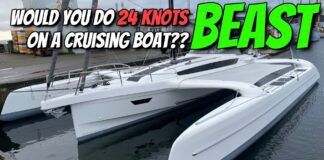This month we conclude our three-part series on life rafts. Well, almost. A great deal of data was generated from both the wave pool tests and item-by-item scrutiny of the many rafts-43, divided between Belvoir Publications marine and aviation newsletters.
Unfortunately, there are a few issues we havent had room to discuss yet, and must wait until upcoming issues. These include a brief analysis of the fabrics from which life rafts are made-rubber-based products, PVC and polyurethane; and some observations on lessons learned from the 1999 Sidney-Hobart Race in which many yachts were disabled, and a number of crews were forced to deploy life rafts, some times with disastrous results.
In the past few years there have also been some notable changes in the life raft industry that may impact your purchasing decisions.
Givens Marine Survival
Givens is no longer solely owned by, nor is it managed by, its founder, Jim Givens. Frank Perrino assumed majority ownership in 1996 and the name was changed to Givens Marine Survival Co. A lawsuit with Jim Givens ensued, resulting in a 1997 judgment prohibiting Givens from the business for six years. Under Perrino the company opened its own factory in 1997; previously, a sub-contractor built the rafts. Meanwhile, the now defunct Jim Givens Survival Co. and Givens Ocean Survival Systems, Co. (the original Givens company), which were still operated by Jim Givens, had their authorization revoked by the Coast Guard in 1999 after numerous instances of improperly serviced rafts were uncovered. The current manufacturer, run by Perrino, was not implicated. A USCG Marine Safety Alert issued in May 1999 advised those owners who had rafts serviced by these companies since 1997, and which have not been serviced since, to have them re-inspected.
Winslow LifeRaft
In the last decades of John Winslow’s life and after his death the Winslow Co. suffered from neglect and its reputation went down the tubes. In 1989, Winslow was acquired by Fred Shoaff, who shut down the company, designed a new line of lightweight offshore rafts aimed initially at racers, and then started up production again as Winslow LifeRaft. The line expanded from there.
In 1999, they moved into a new factory. The only resemblance between Winslow rafts of today and those built under its namesake is the name. Until recently, Winslow rafts had to be returned to the factory for service, though Winslow ‘s standard service fee includes FedEx shipping both ways anywhere in the world. As we go to press, Winslow is opening selected service stations worldwide.
Zodiac of North America
In the past few years, Zodiac of France has gobbled up a number of smaller life raft companies to become the 800-pound gorilla of the industry. In rafts, besides Zodiac, they now own Autoflug (Germany), Avon (UK), BFA (Germany), Bombard (France), ProSaver (Germany), and they hold 50% of DBC Marine Safety (Canada). They also own aviation raft producers Aerazur (France) and Air Cruisers (U.S.). Avon rafts are now made in Autoflug’s Hungarian factory and Bombard brand rafts are now identical to Zodiac. Both Avon and Zodiac have introduced new rafts this year, but were unable to supply them in time for our tests.
Thanks to Doug Ritter for his project leadership and tireless efforts, the USCG personnel and volunteers who participated in the evaluation of life rafts.
-Dan Spurr










































